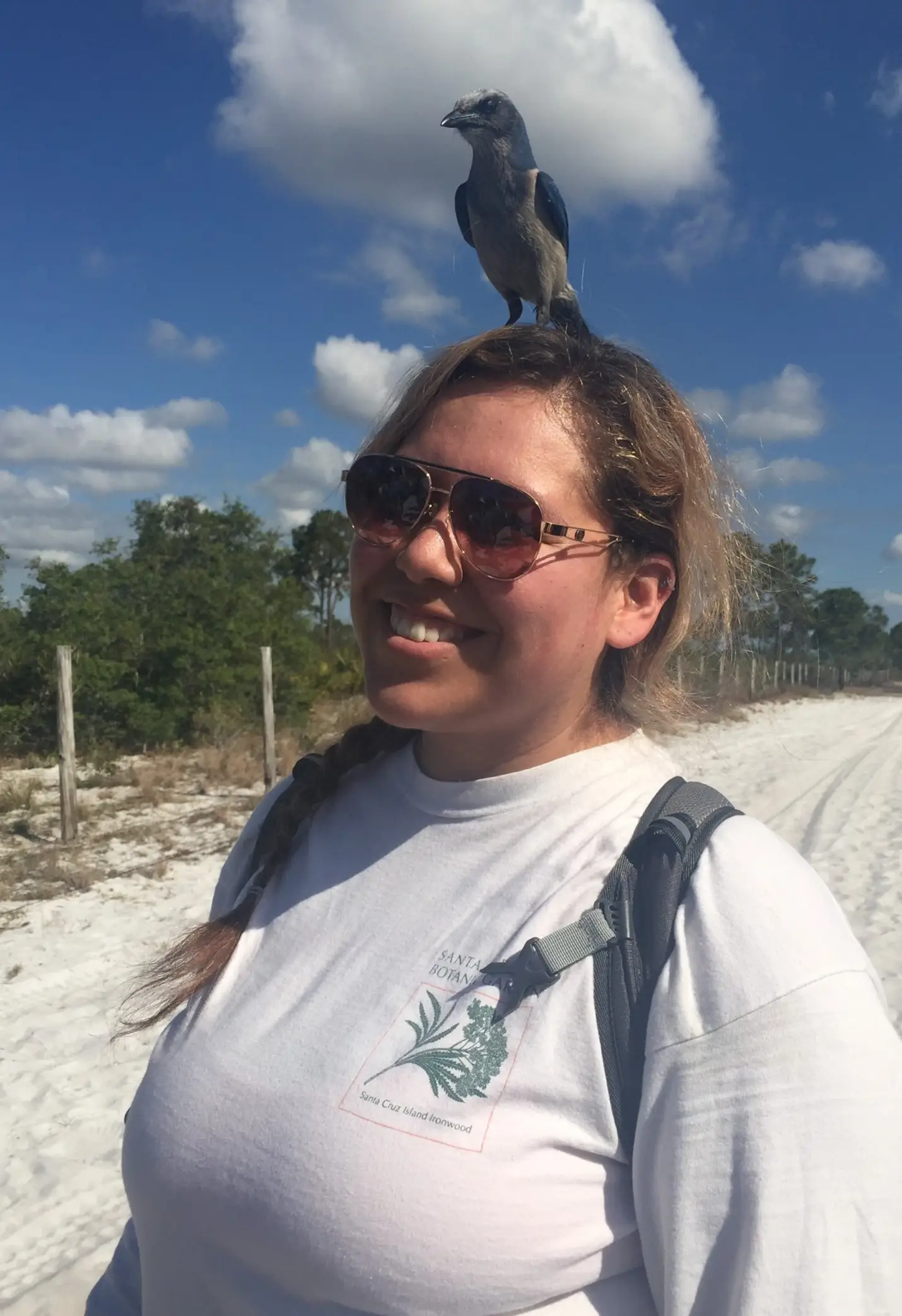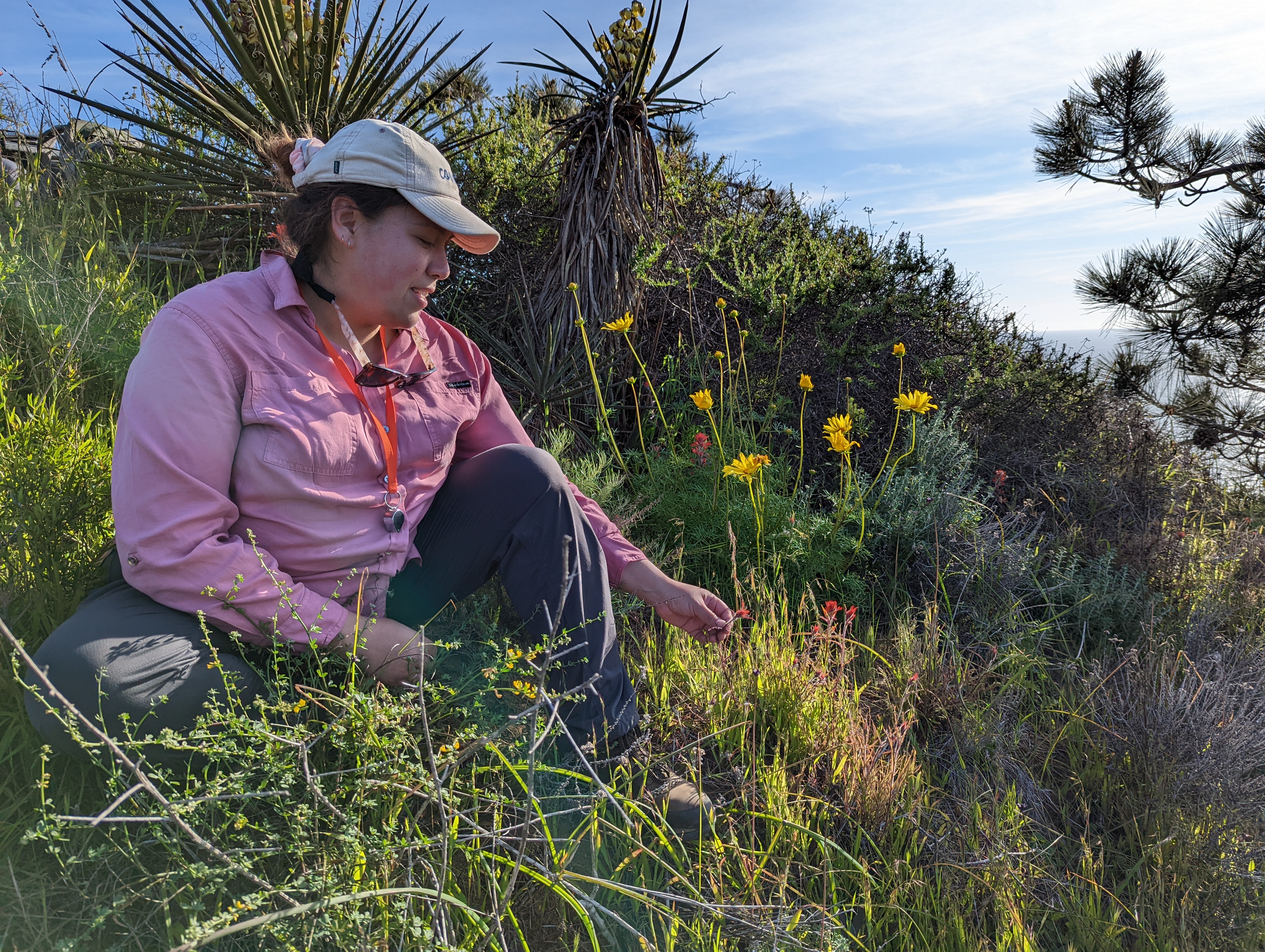|
Adriana I. Hernandez
Postdoctoral Fellow
California Academy of Sciences
Botany
Posted 8-22-23
Twitter: @calobot
 |
I work as a postdoctoral researcher at the California Academy of Sciences Botany Dept. with Dr. Sarah Jacobs, where I integrate molecular tools such as genomics and population genetics with morphological and ecological studies to inform species boundaries in Castilleja (Orobanchaceae), the paintbrushes. My main project focuses on evaluating species relationships of red, perennial Castilleja species that grow mainly along the coast of California and appear to be diverging in the midst of gene flow. Castilleja is a genus of American wildflowers that poses long-standing challenges in formally describing its 200+ species and their evolutionary relationships. Many Castilleja species are difficult to distinguish in the field, in part due to their hypervariable nature, their overlapping geographic distributions, and their potential to hybridize. This makes identifying Castilleja in the field particularly fun, but challenging. Castilleja species are also hemiparasitic and many are polyploid, which could be driving their high variability in phenotype.
The challenges in this lineage have allowed me to apply expertise from my doctoral research in population biology and comparative genomics to take a holistic approach in assessing and characterizing how these species and populations are related to each other, to characterize their ecological specializations, how to best identify species in the field, and ultimately, to evaluate how they are related to other species in the genus. Key to this approach is leveraging PacBio Hifi technology to assemble a high-quality, phased genome that will provide a reference for comparative genomic and population genetic analyses. I wrapped up my first field season and am beginning to analyze various datasets across genetic, morphological, and ecological lines of evidence.
 |
Adriana sitting in coastal sage scrub habitat while identifying a Castilleja plant, San Diego County, California.
How Adriana got interested in the botanical sciences:
I often think about my journey into botany as beginning with my undergraduate career. I enrolled at the University of California, Santa Barbara (UCSB) to pursue a bachelor’s degree in biology. However, my interests in evolution and ecology drew me to the study of religion and ethnobotany - the study of the relationship between people and plants. I soon began working as a Research and Editorial Assistant in the Religious Studies and Chicano/a Studies Departments under Dr. Ines Talamantez, one of the nation’s leading researchers of Native American studies. I helped her research the Mescalero Apache’s use of cattail (Typha) pollen in religious ceremony, specifically how Typha pollen is used as a powerful tool to metamorphosize girls into women during their puberty ceremonies. As I learned more about cattail pollen, I realized I wanted to learn more about the plants themselves - their diversity, their distribution, their relationships to each other.
I subsequently took Dr. Susan Mazer’s Plant Biodiversity course at UCSB and grew enamored with California’s diverse flora and ecosystems, and the rich indigenous plant knowledge held by the Chumash. It wasn’t until then, my last quarter at UCSB, that I realized I wanted to be a plant biologist. After college, I leaned on volunteer experiences at the Santa Barbara Botanic Garden, which ultimately led me to a conservation technician position there, to gain the knowledge and experiences necessary and to develop career goals for a PhD at Cornell.
In retrospect, my journey into botany began when I was a child with traditional family and community knowledge about the uses of plants for ailments, food, and art. I still remember using aloe for scrapes, drinking mint or rice tea for stomach aches, and even pressing flowers between books to make bookmarks and postcards for family in Mexico.
 |
Two color morphotypes of Castilleja latifolia in coastal dunes, San Mateo County, California.
Adriana's advice for those just starting their botanical journey:
Plants touch every part of our lives. From textiles to medicine, food, art, and everything in between, there is still so much to be discovered about plant biodiversity. I encourage everyone to think about the ways that their other passions and experiences can help inspire and benefit their botanical journey. After all, “Creativity is Intelligence Having Fun.” -Albert Einstein.
Adriana's other passions:
I regularly practice yoga, love cooking and trying new recipes, recently picked up paddle boarding (really, I’m up for almost anything outdoorsy), and I enjoy reading books on philosophy, religion, and consciousness.
Outside of these hobbies and my research, one of my goals is to inspire students to pursue careers in biology and to help members of my communities to develop their sense of place in the natural world. As a first-generation immigrant and first-generation scholar, I recognize that my success is built upon the guidance of mentors, and this has become integral to who I am as a person both in and outside of science. By creating space and support for historically marginalized communities in science, I strive to mentor and uplift historically marginalized students to pursue their goals in higher education and research. This work ranges from volunteering as a guest lecturer and even pen pal, to leading workshops, to developing and implementing pipeline programs for marginalized youth. In doing so, I can help demystify scientific discovery, share my culturally informed academic journey and transition from ethnobotanical to evolutionary research, and highlight the relevance of biodiversity research to their everyday lives. Central to this goal is redefining who scientists are - that is, breaking down misconceptions about who scientists are “supposed to be.” I enjoy sharing with my community who I am outside of my research including those hobbies I listed above!
Click here to return to BSA Spotlight Series homepage.
|